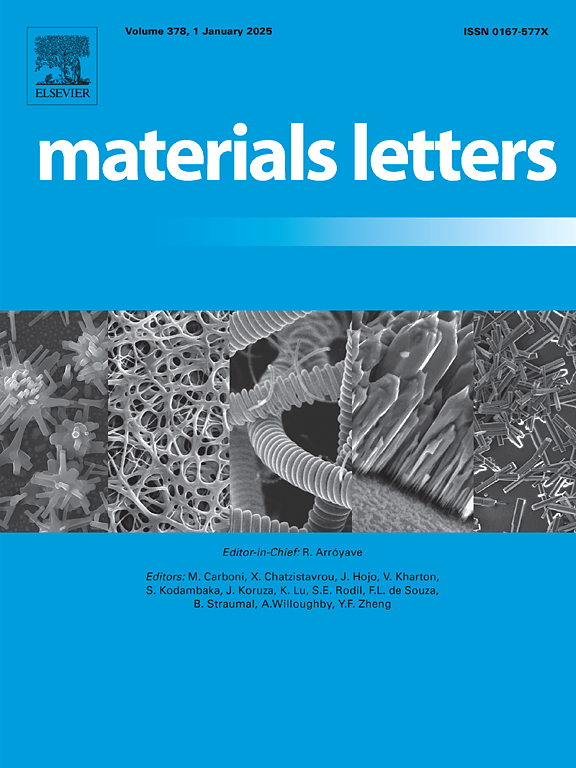Spherical cellular aluminum foam with enhanced interconnectivity: Enabled by modified NaCl template
IF 2.7
4区 材料科学
Q3 MATERIALS SCIENCE, MULTIDISCIPLINARY
引用次数: 0
Abstract
Open porous aluminum with a hierarchical pore structure was fabricated via template replication using spherical NaCl particles. To enhance pore interconnectivity, the sintered necks between adjacent spherical NaCl particles were further bonded—driving the formation of a novel structural evolution. The foam featured highly interconnected main spherical pores and secondary interconnected pores, achieving a porosity of up to 82.51 %—the highest reported porosity for NaCl-templated metal foams without structural defects. Compressive tests revealed a yield strength of 1.242 ± 0.048 MPa and an elastic modulus of 0.105 ± 0.007 GPa. Notably, the foam maintained excellent structural integrity: no obvious stress drop was detected under compression, interconnected pores were preserved at 50 % strain, and no cracks formed until 80 % strain, with porosity decreasing to 71.68 % and 61.29 %, respectively.
具有增强互联性的球形泡沫铝:通过修改的NaCl模板实现
采用模板复制法制备了具有分层孔结构的开孔铝。为了增强孔隙的连通性,相邻球形NaCl颗粒之间的烧结颈进一步结合,形成了一种新的结构演化。泡沫具有高度互连的主球形孔和次级互连孔,孔隙率高达82.51%,这是报道的无结构缺陷的nacl模板金属泡沫的最高孔隙率。抗压强度为1.242±0.048 MPa,弹性模量为0.105±0.007 GPa。值得注意的是,泡沫材料保持了良好的结构完整性,在压缩状态下没有出现明显的应力下降,在50%应变状态下保持了连通的孔隙,在80%应变状态下没有形成裂缝,孔隙率分别降至71.68%和61.29%。
本文章由计算机程序翻译,如有差异,请以英文原文为准。
求助全文
约1分钟内获得全文
求助全文
来源期刊

Materials Letters
工程技术-材料科学:综合
CiteScore
5.60
自引率
3.30%
发文量
1948
审稿时长
50 days
期刊介绍:
Materials Letters has an open access mirror journal Materials Letters: X, sharing the same aims and scope, editorial team, submission system and rigorous peer review.
Materials Letters is dedicated to publishing novel, cutting edge reports of broad interest to the materials community. The journal provides a forum for materials scientists and engineers, physicists, and chemists to rapidly communicate on the most important topics in the field of materials.
Contributions include, but are not limited to, a variety of topics such as:
• Materials - Metals and alloys, amorphous solids, ceramics, composites, polymers, semiconductors
• Applications - Structural, opto-electronic, magnetic, medical, MEMS, sensors, smart
• Characterization - Analytical, microscopy, scanning probes, nanoscopic, optical, electrical, magnetic, acoustic, spectroscopic, diffraction
• Novel Materials - Micro and nanostructures (nanowires, nanotubes, nanoparticles), nanocomposites, thin films, superlattices, quantum dots.
• Processing - Crystal growth, thin film processing, sol-gel processing, mechanical processing, assembly, nanocrystalline processing.
• Properties - Mechanical, magnetic, optical, electrical, ferroelectric, thermal, interfacial, transport, thermodynamic
• Synthesis - Quenching, solid state, solidification, solution synthesis, vapor deposition, high pressure, explosive
 求助内容:
求助内容: 应助结果提醒方式:
应助结果提醒方式:


